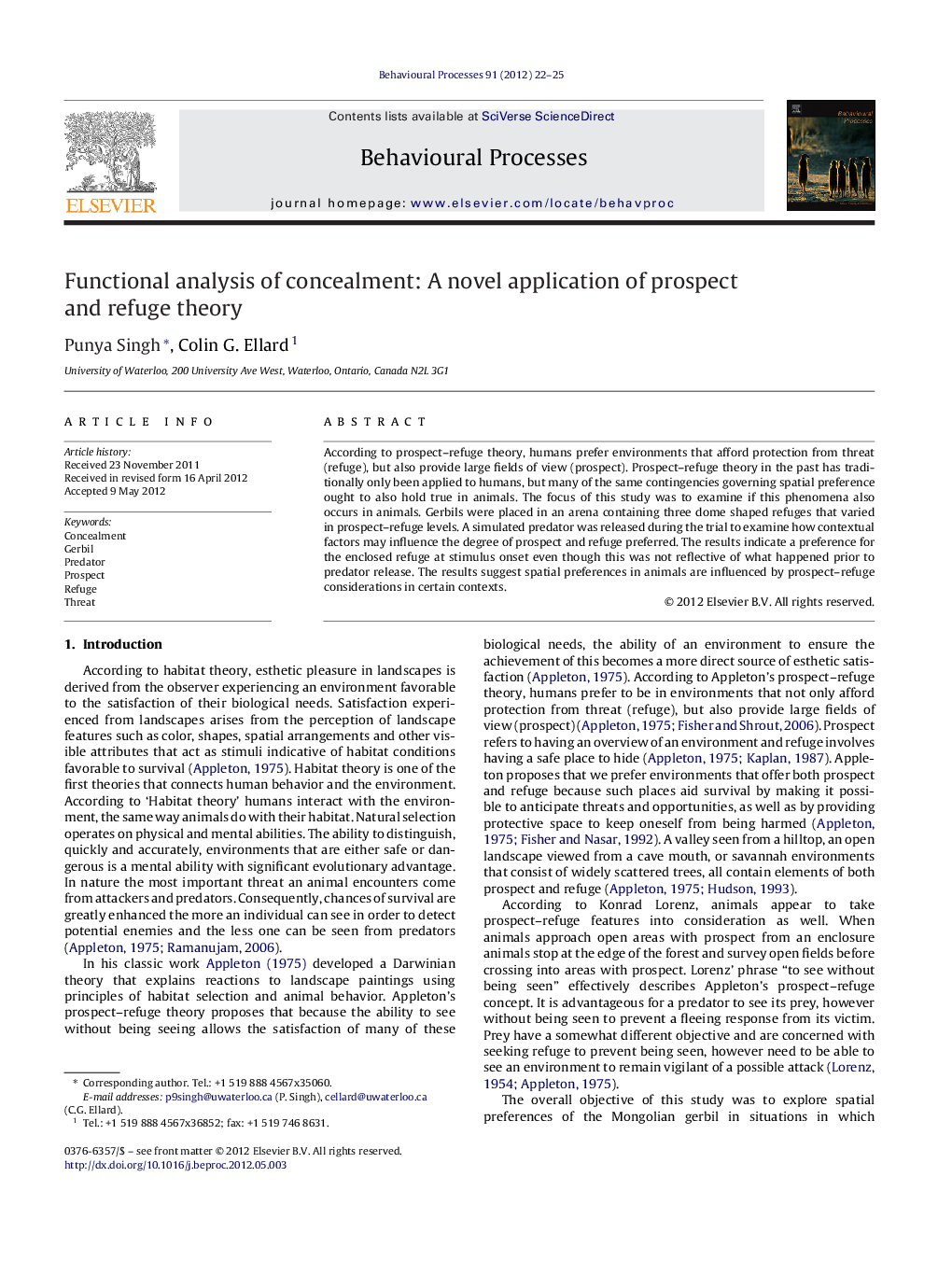| Article ID | Journal | Published Year | Pages | File Type |
|---|---|---|---|---|
| 2426923 | Behavioural Processes | 2012 | 4 Pages |
According to prospect–refuge theory, humans prefer environments that afford protection from threat (refuge), but also provide large fields of view (prospect). Prospect–refuge theory in the past has traditionally only been applied to humans, but many of the same contingencies governing spatial preference ought to also hold true in animals. The focus of this study was to examine if this phenomena also occurs in animals. Gerbils were placed in an arena containing three dome shaped refuges that varied in prospect–refuge levels. A simulated predator was released during the trial to examine how contextual factors may influence the degree of prospect and refuge preferred. The results indicate a preference for the enclosed refuge at stimulus onset even though this was not reflective of what happened prior to predator release. The results suggest spatial preferences in animals are influenced by prospect–refuge considerations in certain contexts.
► The results indicate a preference for an enclosure in the presence of a predator. ► Prospect–refuge preferences are dependant on contextual factors. ► Prospect–refuge theory is not only applicable to humans, but animals as well.
